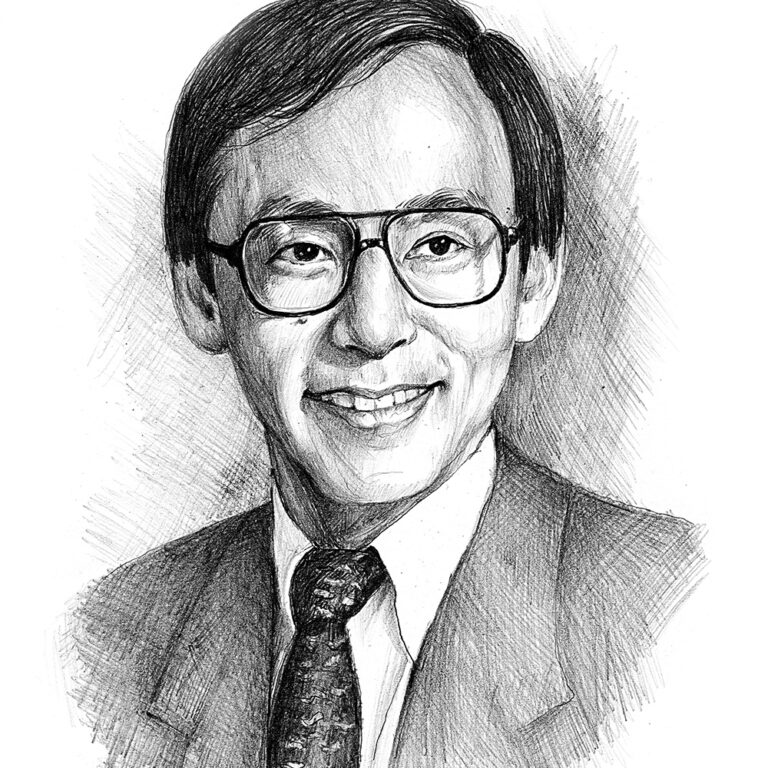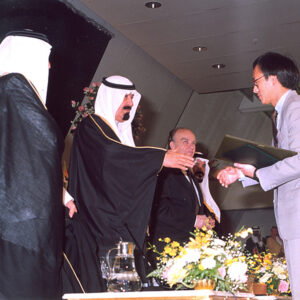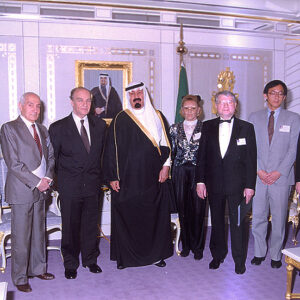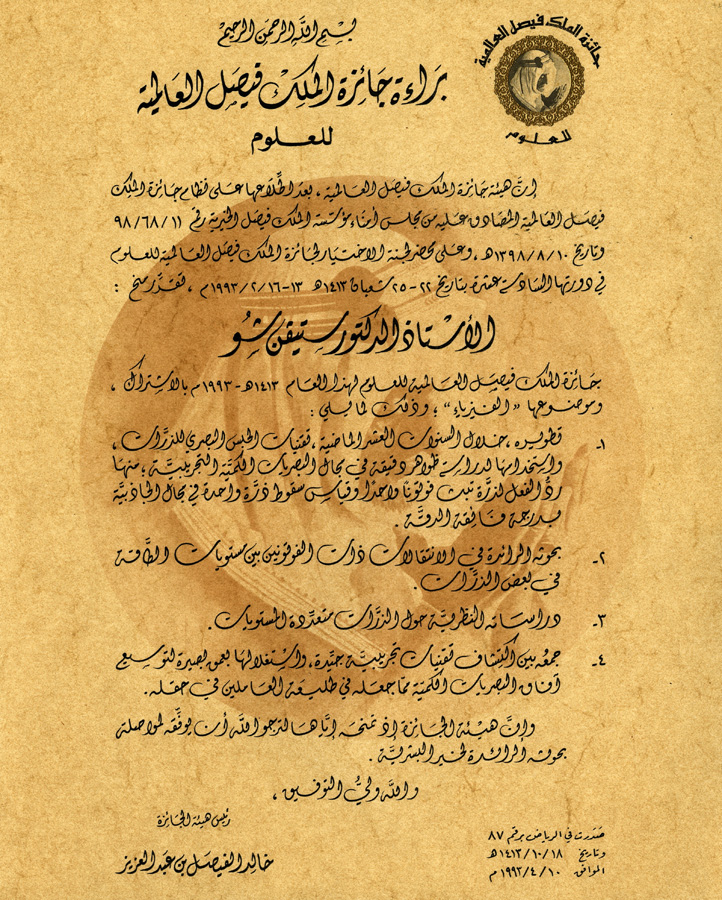

Professor Steven Chu
King Faisal Prize in Science 1993 Laureate
Topic: "Physics "
When I look back on my research career, I see how the seemingly abstract concerns of atomic physics have blossomed well beyond our dreams during those early days

Steven Chu earned his A.B. in mathematics, a B.S. in physics from the University of Rochester, and a Ph.D. in physics from the University of California, Berkeley, where he was a postdoctoral fellow for two years. He joined Bell Laboratories, Murray Hill, in 1978 and became the head of the quantum electronics research department at AT&T Bell Laboratories, Holmdel in 1983. In 1987, he became Theodore and Frances Geballe Professor in the Physics and Applied Physics Departments at Stanford University.
Professor Chu is best known for his work on cooling and trapping of atoms with laser light. He used an array of intersecting laser beams to create an effect in which the speed of target atoms was reduced from about 4,000 kilometers per hour to about one kilometer per hour, as if the atoms were moving through thick molasses. The temperature of the slowed atoms closely approached the lowest temperature theoretically attainable (just one thousandth of a degree Celsius above the absolute zero). These techniques eventually made it possible for scientists to improve the accuracy of atomic clocks used in space navigation, to construct atomic interferometers that can precisely measure gravitational forces, and to design atomic lasers that can be used to manipulate electronic circuits at an extremely fine scale.
Professor Chu’s groundbreaking achievements earned him numerous other prestigious prizes and several honorary degrees. He is also a Member of the National Academy of Sciences and the American Academy of Arts and Sciences.
This biography was written in the year the prize was awarded.
- He held various positions including:
- Member of the Academia Sinica in 1994.
- Foreign member of the Chinese Academy of Sciences in 1998.
- Foreign member of the Korean Academy of Science and Engineering in 1998.
- Member of the American Philosophical Society in 1998.
- Chair of the Physics Department at Stanford University in 1999.
- Director of Lawrence Berkeley National Laboratory in 2004.
- Professor of Physics, Molecular, and Cell Biology at the University of California, Berkeley in 2004.
- U.S. Energy Secretary in 2009.
- International fellow of the Royal Academy of Engineering UK in 2011.
- Foreign Member of the Royal Society (ForMemRS) in 2014.
- President of the Scientific Committee of ESPCI Paris in 2022.
- He received many awards and honors including:
- Humboldt Senior Scientist Award in 1995.
- Nobel Prize in Physics in 1997.
- Golden Plate Award of the American Academy of Achievement in 1998.
- Honorary doctorate from Boston University in 2007.
- Eco Award from Diablo Magazine in 2009.



